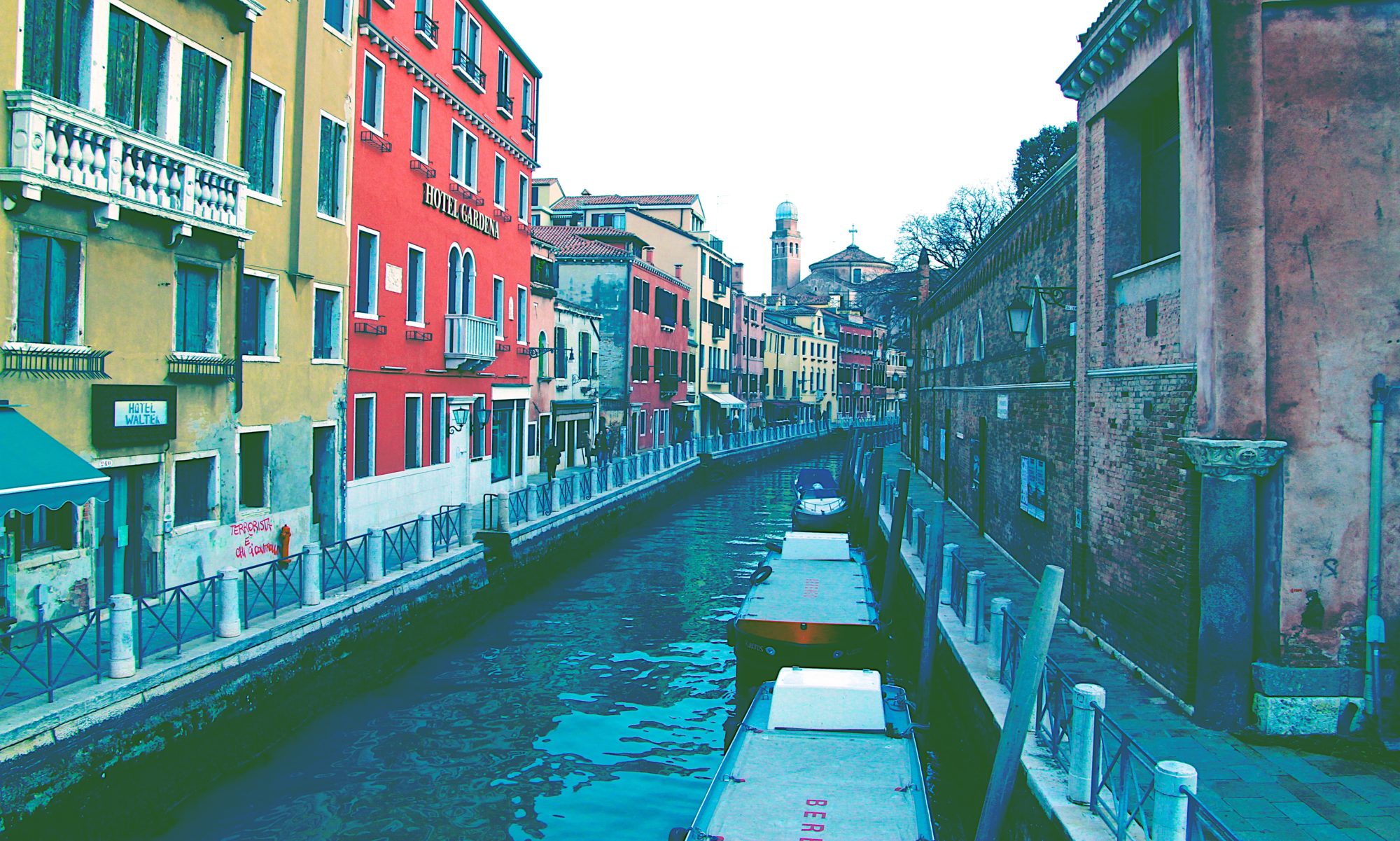The Jewish Ghetto in Venice is a very particular area where I often go …it is near Santa Lucia, immediately after Ponte delle Guglie.
Did you know that the word ‘ghetto’ derives from the Venetian word ‘geto’?
In the early Middle Ages, in this part of the city there was an ancient foundry (a “geto” in Venetian) which was used to forge the bombarde, the small cannons of Venetian ships. When, for political reasons, in 1516 the Republic of the Serenissima established by law that all Jews should live and reside here, the population came mostly from Central Eastern Europe and it was precisely because of their pronunciation that the Venetian term “geto” , was crippled into “ghetto” (German read), originating the term we use today all over the world.

The ghetto area already at that time appeared as it does today: a small island, surrounded by canals, which can only be accessed via two bridges. Corresponding to these, once, there were sturdy gates, which were closed and guarded at night, since the inhabitants were allowed to leave the neighborhood only during the day and with special distinctive signs. If you’re careful, even nowadays, you can see the holes where the hinges of the gates sank.

Maybe I’m wrong, but I think that the Ghetto in Venice is the oldest in Europe, and another particular aspect is the height of the buildings. It seems that building in this area are higher, for the reason that Jewish people could stay only in this area..so the buildings were developed vertically for reasons of space.
Here you can find some commemorative plaques in bronze, in order to remember victims of the holocaust and those deported to concentration camps too.

The Jewish Ghetto in Venice hosted 5 different Jewish communities , and here you can find 5 synagogues (one for each community) that you can visit thanks to the guided tours of the Jewish Museum of Venice.
Outside the synagogues are inconspicuous, some large windows or written in Hebrew make it clear that it is a place of worship. This is because Jews at the time of the ghetto were not allowed to build new buildings, so places inside buildings that pre-existed the establishment of the Jewish quarter in 1516 were used as synagogues. The interiors are often very rich and decorated, for this reason some synagogues of Venice are considered among the most beautiful in Europe.
I like this area of the city because you can see a different culture that continues to live here with its usages and traditions, as landmark for all Jewish that come in Venice.
Moreover, if you want to try the Jewish cuisine, you can find some traditional restaurant here!
So what are you waiting for? I put the Jewish Ghetto in the 10 places to see in Cannaregio, so you have to visit it 😉


